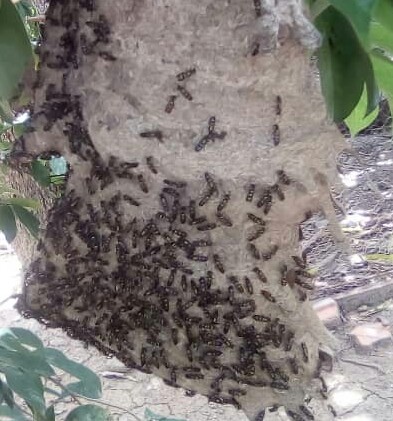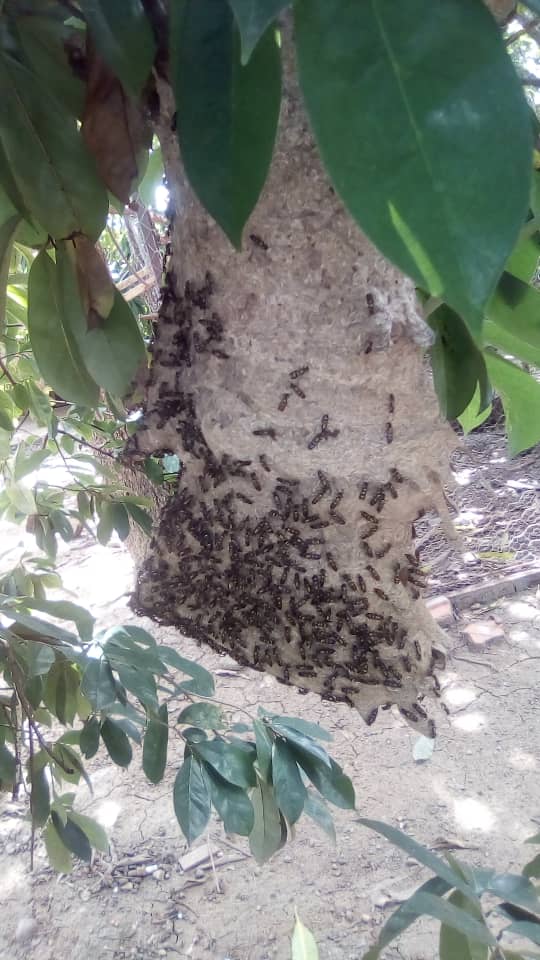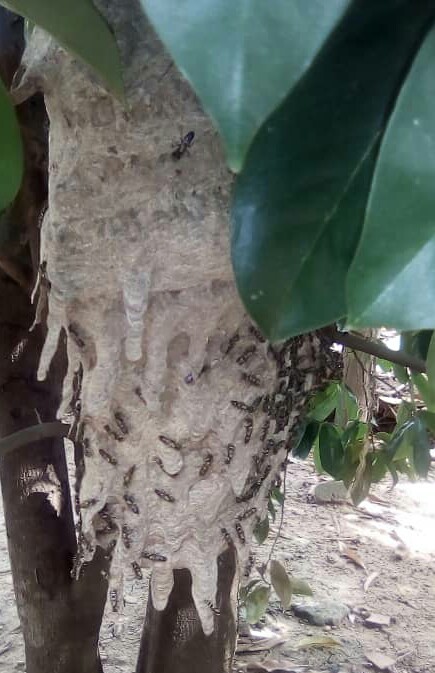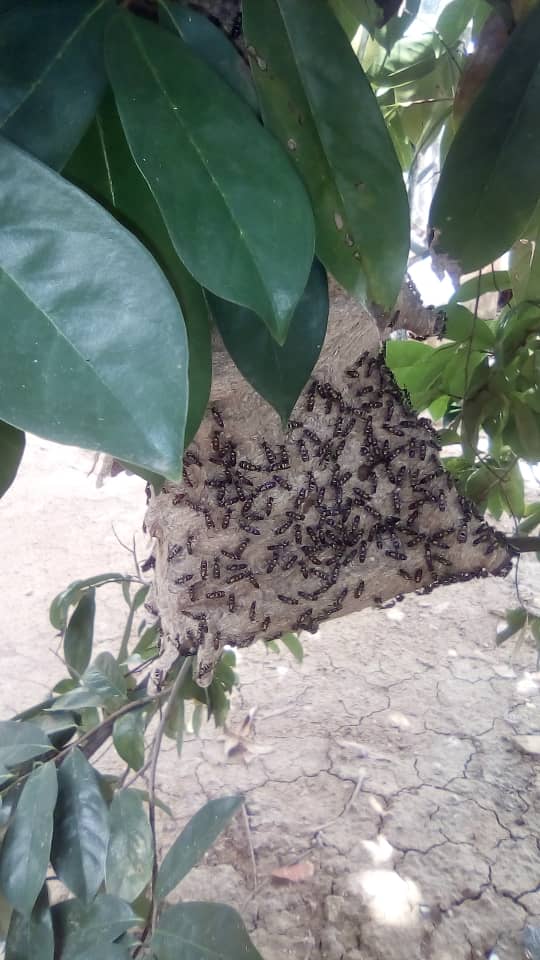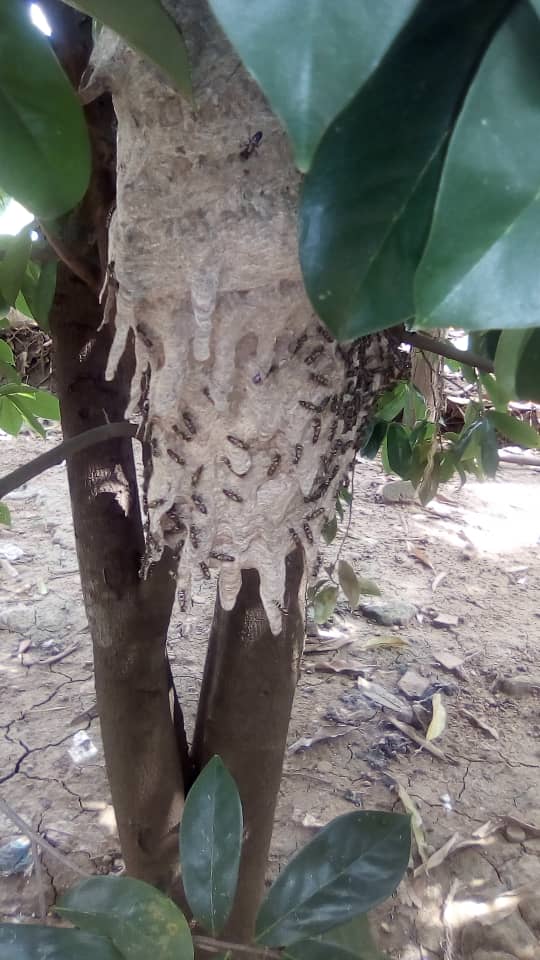Hola saludos hermosa comunidad de Insects of the world me complace estar acá con ustedes compartiendo un poco sobre un panal de avista que fotografíe en el patio de mi casa.
Esta flamante y bella avista tiene por nombre:Polibya
Hello, greetings, beautiful community of Insects of the world, I am pleased to be here with you sharing a little about a birdwatching honeycomb that I photographed in the backyard of my house.
This brand new and beautiful sight has the name: Polibya
Estas avispas se encuentra situada en una mata de guanábana que tengo en el patio de mi casa, ellas son indefensas siempre y cuando no se les haga ruido, ellas llevan solo 4 días allí y ya han formado un gran panal, el cual tiene miel oscura.
These wasps are located in a soursop bush that I have in the backyard of my house, they are defenseless as long as they are not made noise, they have only been there for 4 days and have already formed a large honeycomb, which has dark honey .
Polibya:
Es el nombre común con que se designan a esa especie de avispa: en Argentina y Uruguay, en particular se refiere a la especie Polybia occidentalis.
Su hábitat se extiende desde México en América del Norte, América Central hasta Argentina en América del Sur.
Son avispas que forman numerosos panales cuyos nidos en su mayoría de están en los árboles, pero también lo hacen en rocas así como también en techos de casas y galpones.
Polibya:
It is the common name for this species of wasp: in Argentina and Uruguay, in particular it refers to the species Polybia occidentalis.
Its habitat extends from Mexico in North America, Central America to Argentina in South America.
They are wasps that form numerous combs whose nests are mostly in trees, but also in rocks as well as on the roofs of houses and sheds.
*Estas avispas son presa de aves; las hormigas se aprovechan de ellas y las parasitan,se pican unas a otras para comunicar que es hora de empezar a trabajar
*Producen una miel oscura y algo áspera. La composición química de dicha miel y también de la toxina que inyectan con su aguijón han sido estudiadas.
*El nombre también se da a los nidos de insectos de este género.
These wasps are prey for birds; the ants take advantage of them and
parasitize them, they sting each other to communicate that it is time to start working
They produce a dark and somewhat harsh honey. The chemical composition of this honey and also of the toxin that they inject with their stinger have been studied.
The name is also given to the nests of insects of this genus.
¿Como se distinguen?
Las avispas se distinguen por sus colores negro y amarillo. El color de base es el negro y tienen unas pocas franjas amarillas en el abdomen. Las alas son delgadas y el tórax está unido al abdomen por un pecíolo largo y fino. Las obreras tienen un peso seco promedio de 3,80 mg a 6,71 mg. La longitud del margen costal de las alas es de 3,6 mm a 4,7 mm. La avispa reina se diferencia de las obreras porque tienen ovarios más grandes.
How are they distinguished?
Wasps are distinguished by their black and yellow colors. The base color is black and they have a few yellow stripes on the abdomen. The wings are thin and the thorax is attached to the abdomen by a long, thin petiole. The workers have an average dry weight of 3.80 mg to 6.71 mg. The length of the costal margin of the wings is 3.6 to 4.7 mm. The queen wasp differs from the workers because they have larger ovaries.
Autor: @ arminda65
Teléfono móvil: Blu studio x9
Ubicación: Llanuras Centrales de Venezuela
Author: @ arminda65
Mobile phone: Blu studio x9
Location: Central Plains of Venezuela
